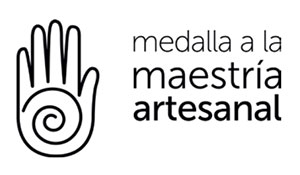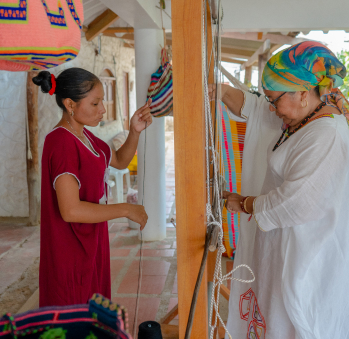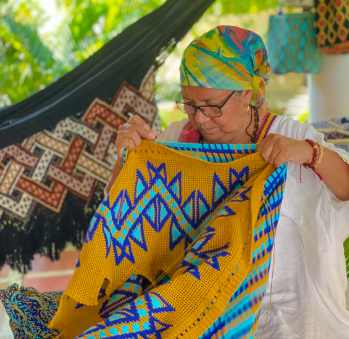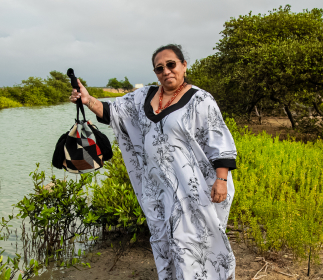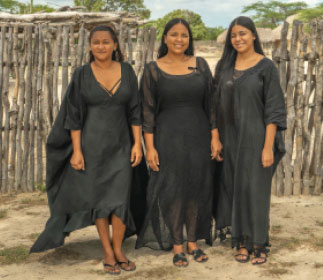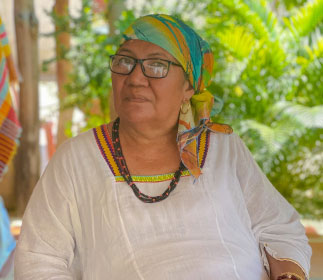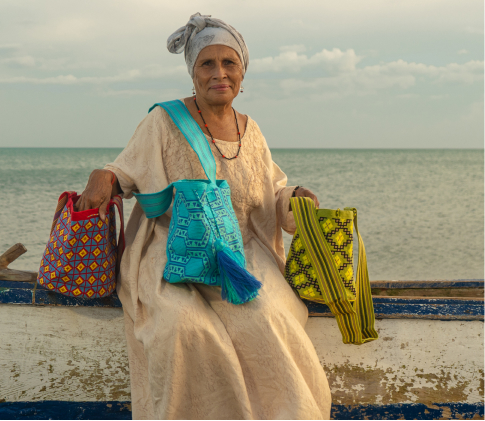María Concepción “Conchita” Iguarán
For María Concepción “Conchita” Iguarán, Wayúu weaving represents the existence of her people. This way of life has given her and many other craftswomen the opportunity to immerse themselves completely in what they do. They dream when they perform their craft. They can even transport themselves into another world, another place or another time. There is a saying in their land that says that weavers’ dreams are imprinted into their weaving. They also say that each weaver participates with their own hands through many different webs of knowledge and tradition in the teachings of the weaving spider.
Conchita was born in the Kayashirralu community, in the district of Bahía Honda, Uribia. There, she learned to weave by her mother’s side. The latter was named Tulia Uriana. When she started, she thought of weaving as a game. She used to entangle the yarn and make small bags, blankets, and hammocks for her clay dolls. She gradually refined her work and took a technical training course on crafts at the National Learning Service (SENA). She also went through other courses on design and color techniques. Nevertheless, she soon realized that she was not going to find the knowledge she needed at any university: she would have to find it in the wisdom of her grandmothers’ hands.
Bringing everything she knew together, she managed to intertwine the Western world of design with the ancestral traditions of her people and their iconography. Hers is a tradition that weaves the footprints of animals on the sand, the shape of flies’ heads, the forms of cow intestines, and the starry sky’s many constellations. She got involved with the work of several women and became aware of the importance the art of weaving has in the shaping of her society. Thanks to this experience, in 1978, she participated in one of the first diagnoses made of the Wayúu world. This project was designed to come to understand and support the sector’s development.
She has dedicated her entire life to her art: teaching knowledge and establishing bridges between cultures. She has done this by means of the SENA institute, which has allowed her to travel and teach her courses all throughout La Guajira. When she retired, she was able to return to her parents’ land and offer her knowledge back to her own community.
In 2004, her life changed forever. It was the year where the “Conchita Iguarán” brand was launched, which has since received a Certificate of Origin. Artesanías de Colombia awarded her with the Medalla a la Maestría (Crafts Mastery Medal) for her excellence in her craft. Furthermore, some of her creations were presented at Milan Fashion Week. These included the double-sided chinchorro: the weaving that made her famous.
Every month, several girls from other communities come to study ancestral weaving techniques to her house, where she has set up her workshop. There, they learn to weave yarn, and use both the loom and crochet needles. They also learn to manually weave flat, cylindrical, and knotted tassels and cords. Conchita yearns for the craft sector to organize itself and enable the families who make a living from weaving to have a stable income. For now, she continues weaving all day. For her, having yarn between her fingers is a habit that has left its mark.
Craft






Artisans along the way
Artisans along the way
No puede copiar contenido de esta página








































